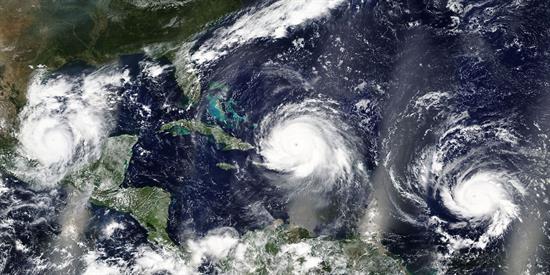Blog Posts
$2 Trillion A Year: The Price of Climate Inaction
Washington,
April 22, 2022
The first Earth Day on April 22, 1970 marked the beginning of our collective awareness that we face an environmental crisis and that we must fight to protect our planet. Over the next 52 years, the environmental movement accomplished a lot — from the establishment of the Environmental Protection Agency to the Clean Water Act — but when it comes to curbing the harmful effects of burning fossil fuels we are still far, far behind where we need to be. This month, the United Nation’s Intergovernmental Panel on Climate Change (IPCC) said we must immediately reduce greenhouse gas emissions to keep the catastrophic impacts of rising sea levels, wildfires, drought, and other natural disasters from ravaging our planet. If we don’t act now, that goal will be “impossible.” On top of the devastating effects the climate crisis will have on biodiversity, agriculture, and our way of life, the Office of Management and Budget (OMB) recently reported that increasing and worsening floods, drought, and wildfires could cost taxpayers $2 trillion annually by the end of this century. Simply put: it will cost us more not to act on climate now. Both of these reports make clear that we have our work cut out for us. However, we also have a lot to celebrate this Earth Day thanks to Congressional Democrats and President Biden. After four years of a president who actively hindered our ability to mitigate the climate crisis — even censoring those very words on government websites — the U.S. has recommitted itself to the fight. President Biden’s first action after taking office was to rejoin the Paris Agreement, reasserting America’s leadership role in the global cause. Now the nation must make up for lost time and set an example for other nations who have pledged to reduce emissions.In the fall, President Biden and House Democrats made the most expansive investment in American infrastructure since the construction of the interstate highway system. The Infrastructure Investment and Jobs Act made historic investments to fight climate change, reduce emissions, and clean up environmental hazards including:
These are just some of the ways that President Biden’s infrastructure law is helping states like Maine to make our infrastructure and economy more climate resilient. As Chair of the House Appropriations Interior & Environment subcommittee, I prioritized climate mitigation investments in the 2022 spending bill recently signed by President Biden. The funding bill I wrote delivers unprecedented funding to the Environmental Protection Agency and Department of the Interior, dedicates resources for the nation’s first-ever Civilian Climate Corps, fosters green job growth, and provides more resources than ever to protect, conserve, and restore our nation’s forests. Additionally, I proudly secured nearly $1 millionto help implement Maine’s Climate Action Plan at the University of Maine. With these landmark bills signed into law, federal funding is already going out to states to implement these climate-smart projects. And I’m already looking ahead to 2023. Every five years, the Congress begins work on a new Farm Bill, which is the primary tool for federal food and agriculture policy. As a member of the House Agriculture Committee, I will be fighting to ensure farmers — who are on the frontlines of the climate crisis — have a seat at the table as we draft the 2023 Farm Bill. By incentivizing carbon sequestration, sustainable agriculture practices, and food waste reduction, the 2023 Farm Bill can put us on a path to achieving net-zero agriculture emissions by 2040 or before. While there is so much more to be done to stop the climate crisis, this Earth Day, I am grateful the Democratic Congress has a partner in President Biden and his administration to prioritize fighting climate change through investments that will reduce greenhouse gases. No one can sit this urgent fight out — no businesses, no governments, no leaders. We can do this, but we must act now. |


